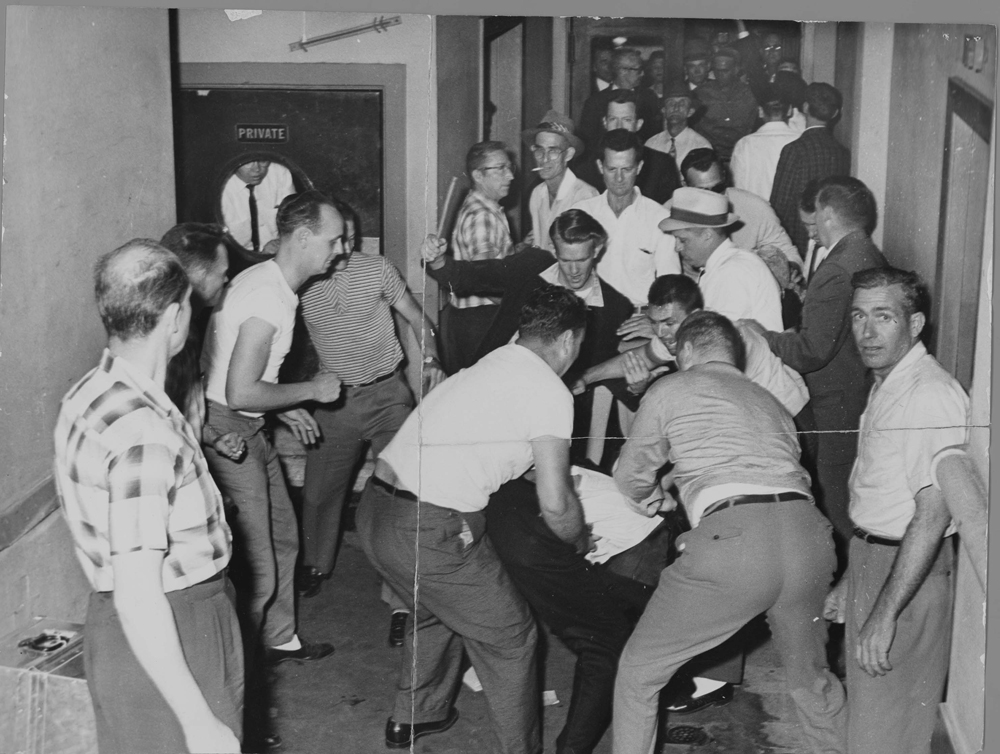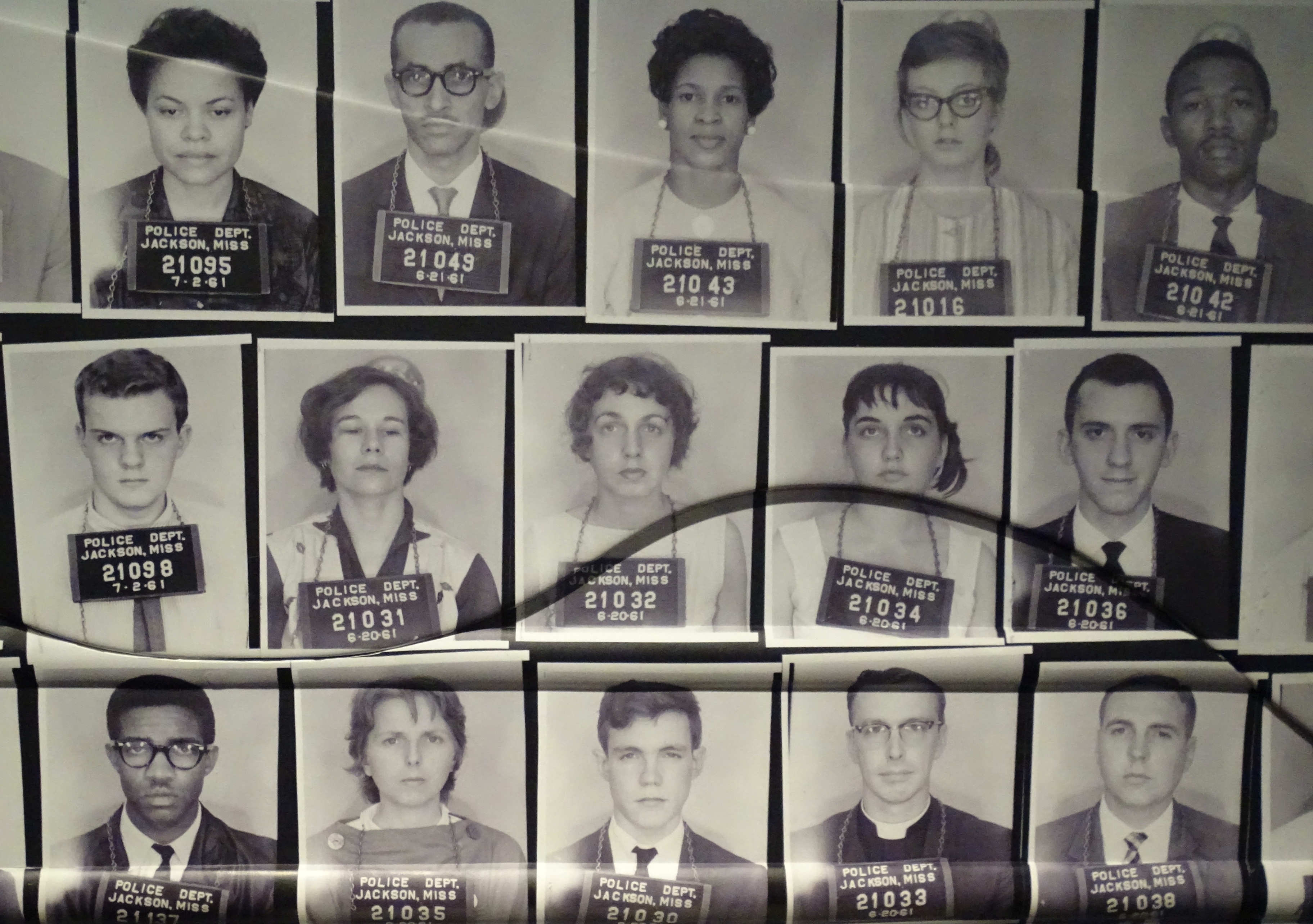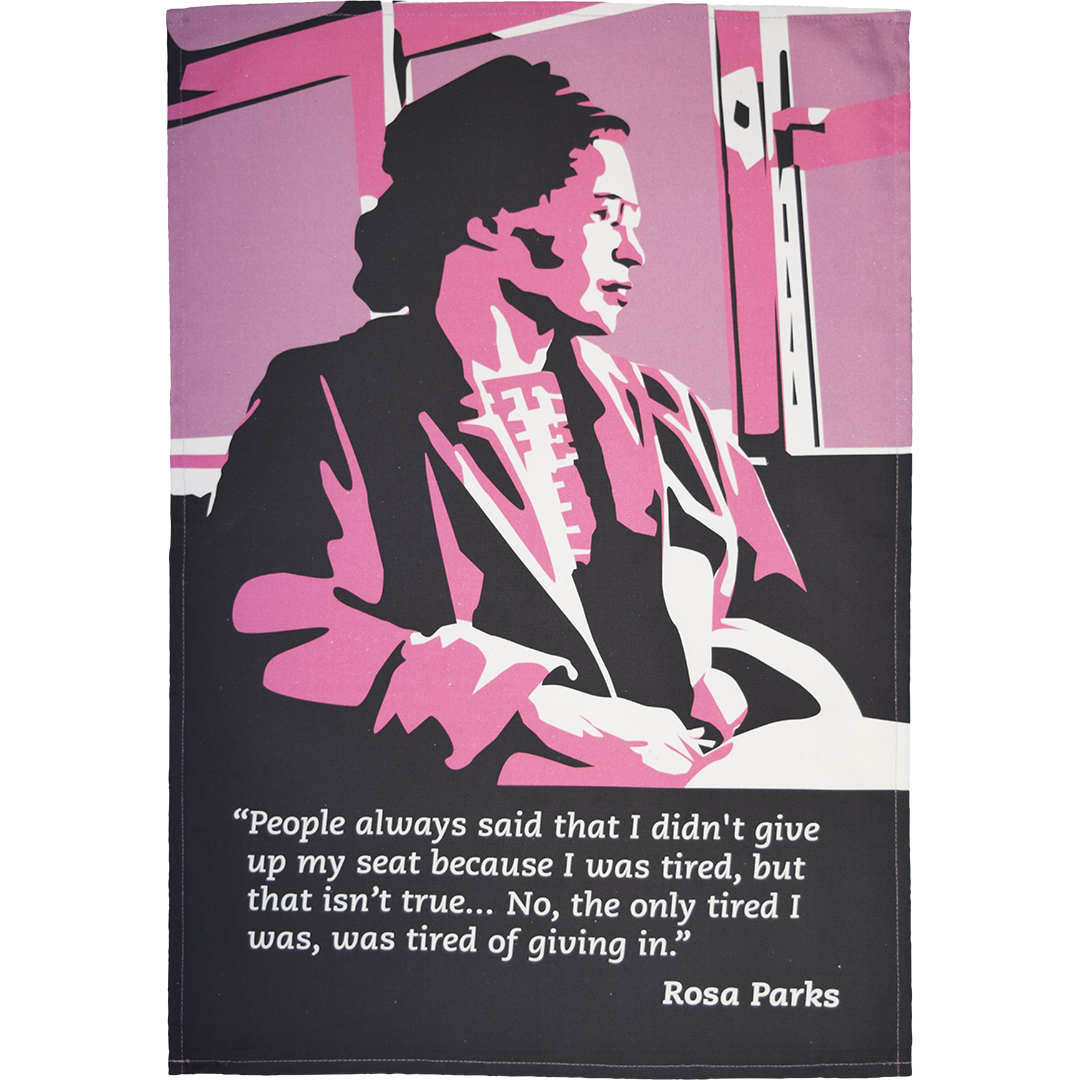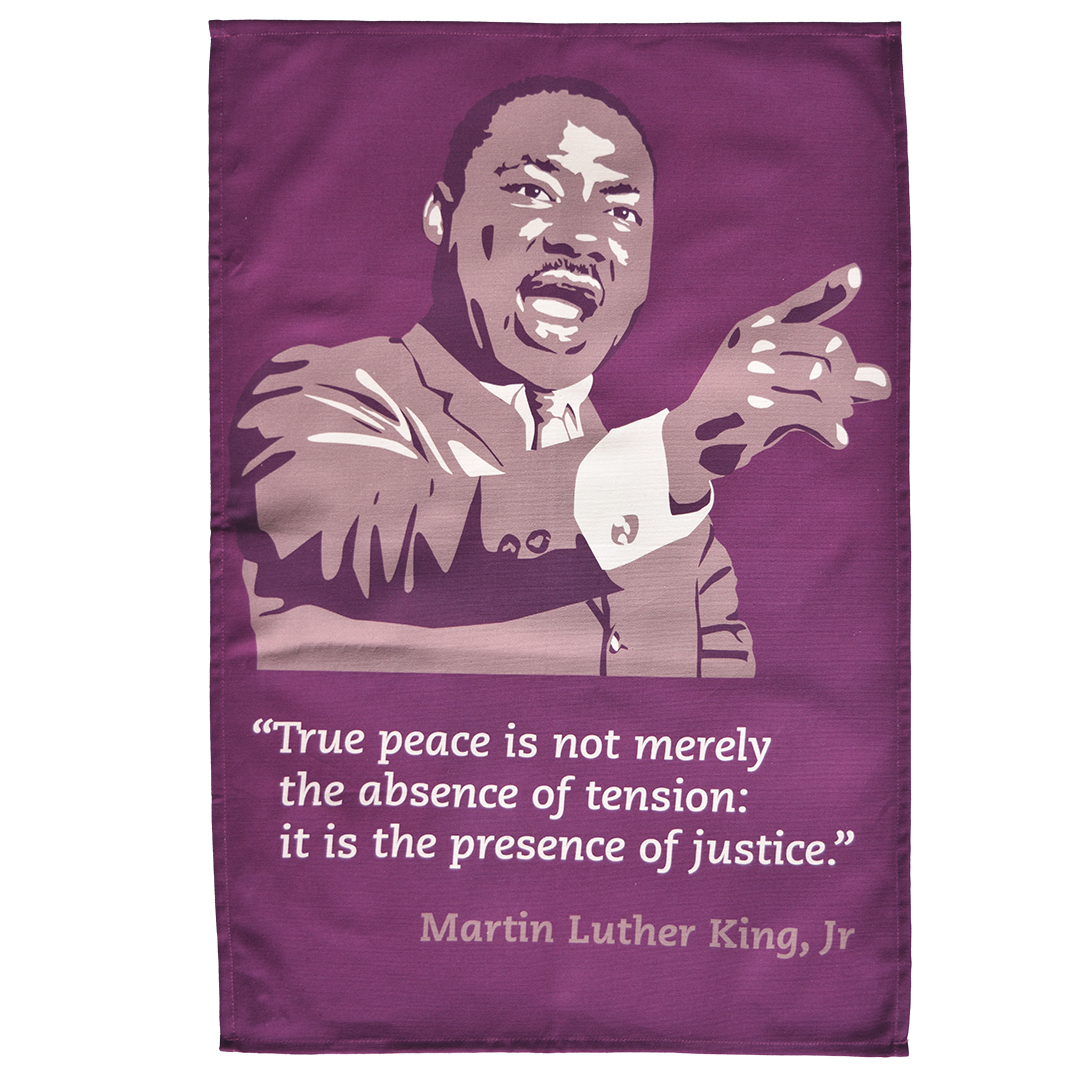Riding for Freedom: The Fight for Desegregation on Public Transport
Posted by Pete on May 25th 2023
In May 1961, Civil Rights activists put their lives on the line for freedom and equality
When Rosa Parks took her seat at the front of the bus in Montgomery, Alabama, she helped to inspire the struggle for black freedom in the South.
But that struggle wasn’t won in Montgomery. The bus boycott was just the beginning.
Five years later, in May 1961, people were still having to fight for the desegregation of public transport in the United States.
Rosa Parks's act of defiance inspired a whole generation of activists to fight against segregation on public transport
Click to view our Rosa Parks tea towel
It was not a matter of getting new laws or judicial rulings passed. The laws were already there.
The Supreme Court had ruled segregation on public buses unconstitutional in 1946 and again in 1960. And the Interstate Commerce Commission had, in theory, rejected the Jim Crow doctrine of “separate but equal” in 1955.
The real problem was non-compliance.
State governments, police departments, and businesses across the South were just ignoring the law, and the White House was keen to turn a blind eye rather than fight for the civil rights of black citizens.
But politics isn’t just about presidents. The people have power, too.
The Congress of Racial Equality (CORE) came up with a plan.
They would have a multiracial coalition of activists take public buses through the South. On each bus, there would be at least one black person sat at the front, and at least one pair of black and white riders sat next to each other.
This arrangement of passengers on a bus was, on paper, now protected by the Constitution.
But in the South, where Jim Crow still ruled in practice, it was judged a heinous crime against white supremacism.
Though he didn't take part in the Freedom Rides, MLK publicly showed his support for the activists fighting for desegregation
Click to view our Martin Luther King tea towel
Down in the South, white supremacy was defended with barbaric violence, by an open alliance of local police, the Ku Klux Klan, and white lynch mobs.
The activists who took these buses south were heading straight into the lion’s den. They were the Freedom Riders.
The first bus left D.C. on 4 May 1961, scheduled to arrive in New Orleans on 17 May. It was led by James Farmer, the Director of CORE.
There were thirteen riders, seven black and six white. Most were under thirty years old. Some were just teenagers.
This was true of most of the buses – several went down over the summer, carrying 300 Riders overall. They were almost all young, principled, and willing to sacrifice even their lives for freedom in America.
The reaction by the Southern ruling class was predictable: barbaric, racial violence.
On 14 May, the two Greyhound buses of James Farmer’s convoy were firebombed by the Klan in Anniston, Alabama.
The local police had agreed beforehand with the Klansmen that they’d be given 15 minutes to assault, even murder, the Freedom Riders before being ushered away by ‘law enforcement.’
If not for a hasty rescue by Southern black activists organized by Reverend Fred Shuttlesworth, the Riders would have been burned to death then and there.
But they kept on going. And they didn’t go alone. Mobilized by the TV footage of white violence against the activists, more Freedom Riders set out from the North.

When Freedom Riders arrived in the South, they were attacked by white mobs, as shown here in this photograph from Birmingham, Alabama
On 20 May, the first convoy, delayed by the attacks, set out again from Birmingham to Montgomery.
The two buses sped down the highway, fearful of attack by Klan snipers.
And when they reached the interstate bus station in Montgomery, the Riders were attacked by a white mob wielding baseball bats and iron pipes. The local police stood by and watched.
The next night,
Martin Luther King came to a Montgomery Baptist church, to preach in solidarity with the battered Freedom Riders.
The Riders then carried on to Jackson, Mississippi. When they arrived on 24 May, they were arrested.
Behind the scenes, President Kennedy had agreed with the governors of Alabama and Mississippi that, on the condition that they provide meaningful security for the Freedom Riders against lynch mobs, the federal government would look the other way if the riders were arrested for breaking unconstitutional Jim Crow laws in the South.
The Kennedy White House wanted a “cooling off” period, and urged the Civil Rights Movement to stand down on segregation.
James Farmer replied on behalf of all African Americans:
“We have been cooling off for 350 years, and if we cooled off any more, we’d be in a deep freeze.”
There’d be no “cooling off”, then.
Instead, the Freedom Rides escalated. The new strategy was to flood the Southern jails with political prisoners, until they couldn’t handle any more.
Leading Civil Rights activists were arrested, including a young
Kwame Ture, then still known as Stokely Carmichael.
And the pressure soon paid off.
At the end of September 1961, the Kennedy government at last forced the Interstate Commerce Commission to enact desegregation.
From 1 November, passengers on interstate buses were allowed to sit where they wanted, and the ‘white’ and ‘colored’ signs were torn down at bus stations.
The struggle wasn’t over, but the Civil Rights Movement had scored another major victory against white supremacy in modern America.



